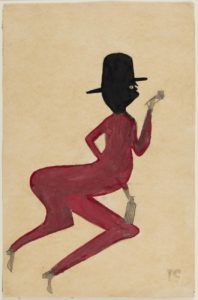
Between Worlds: The Art of Bill Traylor
Until March 17, 2019, Smithsonian American Art Museum, 8th and F Streets, Washington
Red Man, 1939-1942
About:
Between Worlds: The Art of Bill Traylor is the first major retrospective ever organized for an artist born into slavery, and the most comprehensive look at Bill Traylor’s work to date.
Bill Traylor (ca. 1853–1949) is regarded today as one of the most important American artists of the twentieth century. A black man born into slavery in Alabama, he was an eyewitness to history: the Civil War, Emancipation, Reconstruction, Jim Crow segregation, the Great Migration, and the steady rise of African American urban culture in the South. Traylor would not live to see the civil rights movement, but he was among those who laid its foundation. Starting around 1939—by then in his late eighties and living on the streets of Montgomery—Traylor made the radical steps of taking up pencil and paintbrush and attesting to his existence and point of view. The paintings and drawings he made are visually striking and politically assertive; they include simple yet powerful distillations of tales and memories as well as spare, vibrantly colored abstractions. When Traylor died in 1949, he left behind more than one thousand works of art.
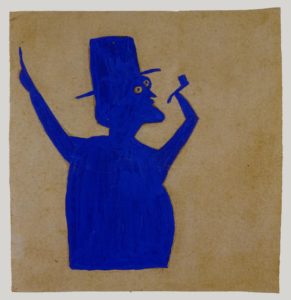
Truncated Blue Man with Pipe, 1939-1942
In Between Worlds: The Art of Bill Traylor, Leslie Umberger considers more than 200 artworks to provide the most comprehensive and in-depth study of the artist to date; she examines his life, art, and powerful drive to bear witness through the means available to him, pictures. The story of his art opens in the late 1930s, when Traylor first received attention for his pencil drawings on found board, and it concludes with the posthumous success of his oeuvre. The book is available in the museum store and in the online bookstore.
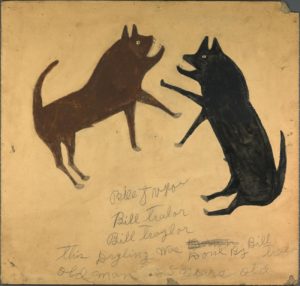
Untitled, 1939-140
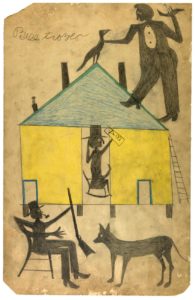
Untitled, 1939
The simplified forms of Traylor’s artwork belie the complexity of his world, creativity, and inspiring bid for self-definition in a segregated culture. Between Worlds: The Art of Bill Traylor situates Traylor as the only known artist enslaved at birth to make a significant body of drawn and painted work. His compelling imagery charts the crossroads of radically different worlds—rural and urban, black and white, old and new—and reveals how one man’s visual record of African American life gives larger meaning to the story of his nation.
The exhibition is organized by Leslie Umberger, curator of folk and self-taught art at the Smithsonian American Art Museum. The Museum’s collection includes seventeen works by Traylor, fourteen of which have been acquired since 2015. Between Worlds features 155 of Traylor’s most important paintings and drawings; in the accompanying monograph, Umberger examines over two hundred works to provide the most in-depth study of the artist to date. The Smithsonian American Art Museum is the sole venue for this major retrospective.

Yellow Chicken, 1939-1940
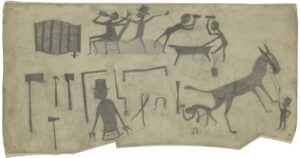
Blacksmith Shop, 1939-1940.
Film
In conjunction with the Between Worlds: The Art of Bill Traylor, SAAM presents the world premiere of Bill Traylor: Chasing Ghosts by filmmaker Jeffrey Wolf. Chasing Ghosts vividly documents the life of artist Bill Traylor, a man who was born into an enslaved family in rural Alabama around 1853. In the mid-twentieth century, Traylor lived and worked in the state’s segregated capital, where he made a large body of drawn and painted work reflecting a life that bridged centuries and American eras.
